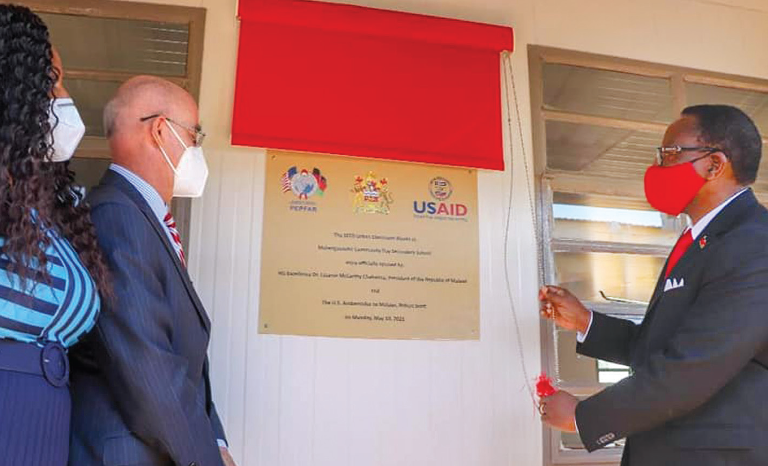2 to build 38 rural secondary schools
The governments of Malawi and the United States of America have awarded construction contracts to two firms to build 38 secondary schools in nine districts under the Secondary Education Expansion for Development (Seed) project.
In a joint statement issued on Sunday, Ministry of Education, US Government through the US Agency for International Development (USAid) and the US President’s Emergency Plan for Aids Relief said they identified Malawian firm Dika Construction and Bozdemir, a firm domiciled in Turkey, as the successful bidders.

“The groundbreaking for the construction works is expected before the end of the year 2021.Once operational, the schools will expand education access for over 9 000 youths based in rural areas of the country,” reads the statement in part.
The $90 million (about K73.8 billion) Seed project has two components covering urban and rural areas.
Under the urban component, the project successfully constructed and handed over to the Malawi Government 96 classrooms in 30 urban schools in the cities of Blantyre, Zomba, Lilongwe and Mzuzu.
Through Seed Rural, the project will construct new secondary schools in rural areas, creating up to 40 000 new seats nationwide, according to the project brief.
In a written response on Sunday, Ministry of Education spokesperson Chikondi Chimala admitted that the project is already behind schedule as all the sites were supposed to be completed by 2022 but it will not be possible.
He partly attributed the delays to the impact of Covid-19, but said for the 38 sites, they are expecting them to be completed within six months from this month.
But education expert Steve Sharra, in a written response on Sunday, lamented the slow pace at which the project is being implemented.
He said: “I am wondering whether this is because of capacity issues in so far as construction is concerned. In other countries, major construction projects are commenced and completed within short periods of time.
“I’m not sure when we should expect to see all the 250 new secondary schools completed, but at this speed, it may take many years.”
Sharra said secondary school spaces were urgently needed as the majority of young Malawians of secondary school going age, representing 84 percent,remain out of school because the country has few secondary schools.
Currently, he said the country has space for just 38 percent of those who pass the Primary School Leaving Certificate of Education examination and observed that to reach 100 percent as planned by 2030, there is need to build more than 1 000 new secondary schools.
Sharra also said the small number of secondary schools is also the reason why the country has an even smaller percentage of Malawians of college age attending university.
He said: “The number of students who qualify for college every year does not exceed 30 000 based on the National Commission for Higher Education’s records, yet we have over 2 million youths in that age category.
“But the Malawi 2063 Implementation Plan for the first 10 years, MIP-1, gives hope that we are beginning to think more strategically towards where we need to be going in as far as public investments are concerned. That’s what gives me hope.”
Government believes classroom decongestion is critical to expanding school access and slowing the spread of Covid-19. Each new classroom fits 60 additional seats, but school officials can configure the rooms in a way that keeps the students properly distanced and safe, while still expanding access.
The project seeks to have 250 million new secondary schools nationwide using $90 million (about K73.8 billion) provided by the US government.





